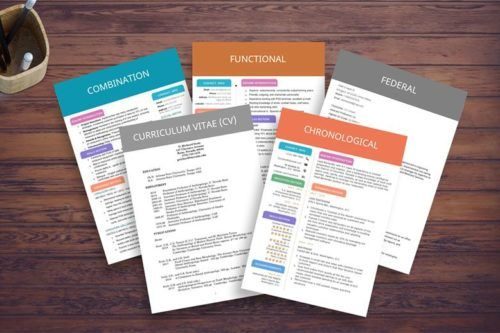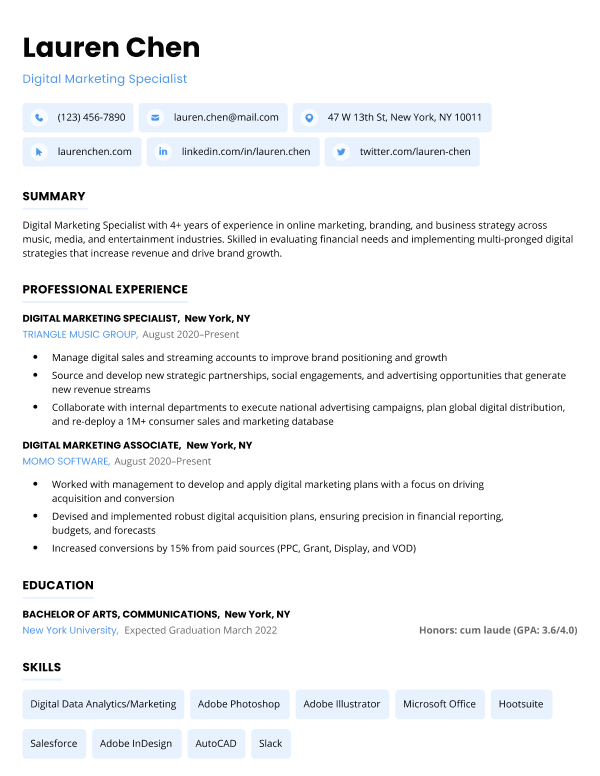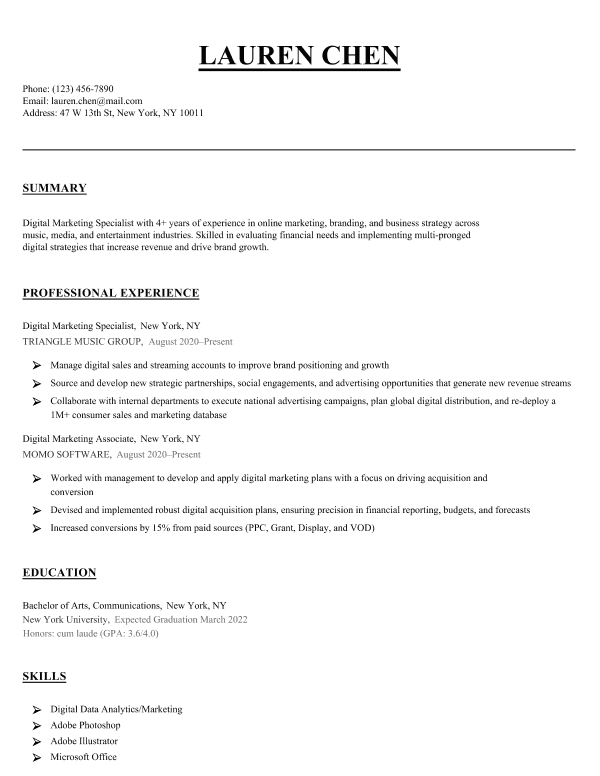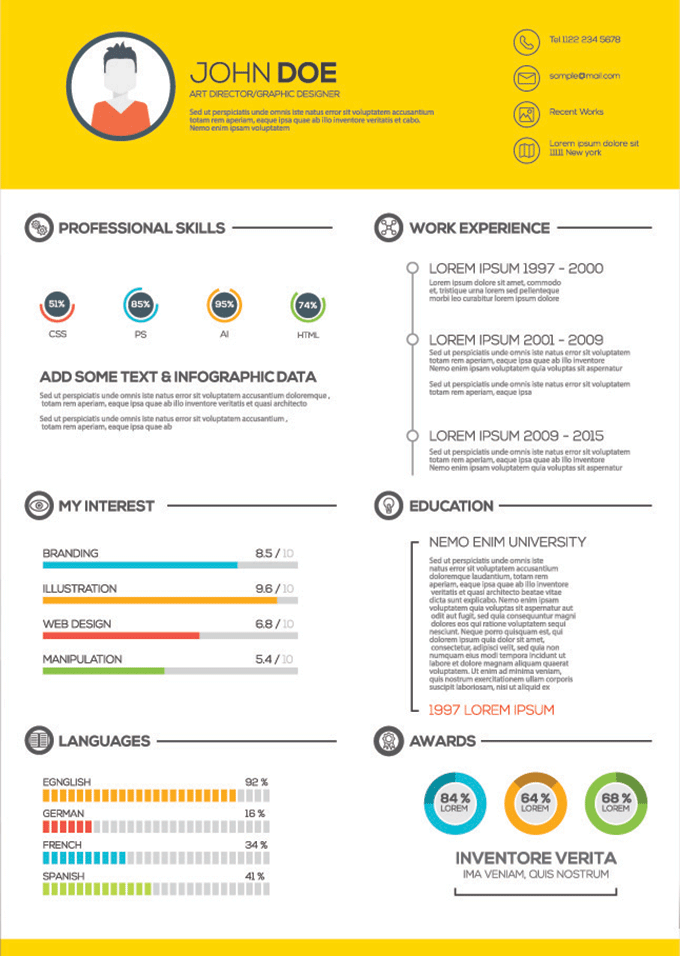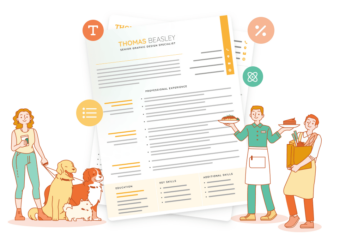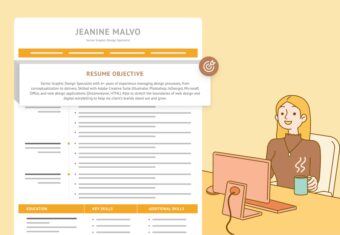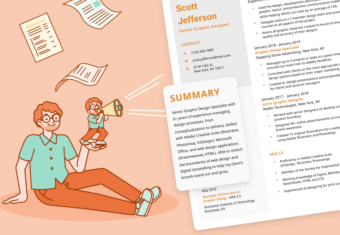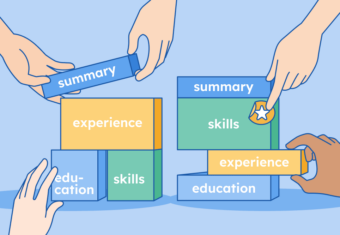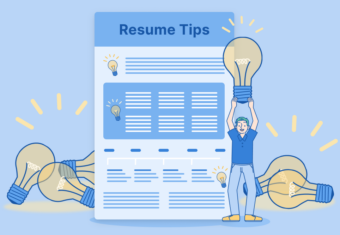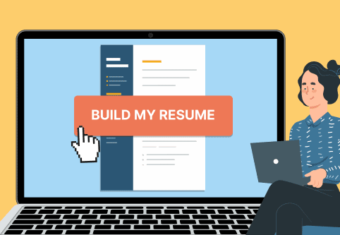Wondering what a resume is and what type of resume is right for you? No matter how much experience you have or what kind of job you want, there’s a type of resume to fit your needs.
Below we outline each type, so you can choose the best one for your job application.
Our free-to-use resume builder can make you a resume in as little as 5 minutes. Just pick the template you want, and our software will format everything for you.
The main 3 types of resumes
Eva Chan, your in-house Certified Professional Resume Writer explains the differences between the three types of resumes and which one you should choose:
As Eva says, there are three main resume types that job seekers use today, each with its own strengths and uses: the chronological resume, the functional resume, and the combination resume.
1. Chronological Resume
A chronological resume is a resume type that focuses heavily on your work history. Its key feature is that it lists your work history in order of when you held each position (in chronological order), with your most recent job listed at the top of the section.
The chronological resume structure is the most common format, and is considered the standard for most industries.
The two advantages of a chronological resume are:
- It lets the hiring manager easily see how you’ve progressed in your career
- It puts your most relevant work experience at the top, where it’ll be seen first by recruiters and employers
Who Should Use It
If you’ve got a straightforward employment history without gaps and a long record of accomplishments and skills in the industry you’re applying to, it’s usually best to write a resume that follows the chronological resume format.
Chronological resume example
Here’s what a reverse-chronological resume looks like:
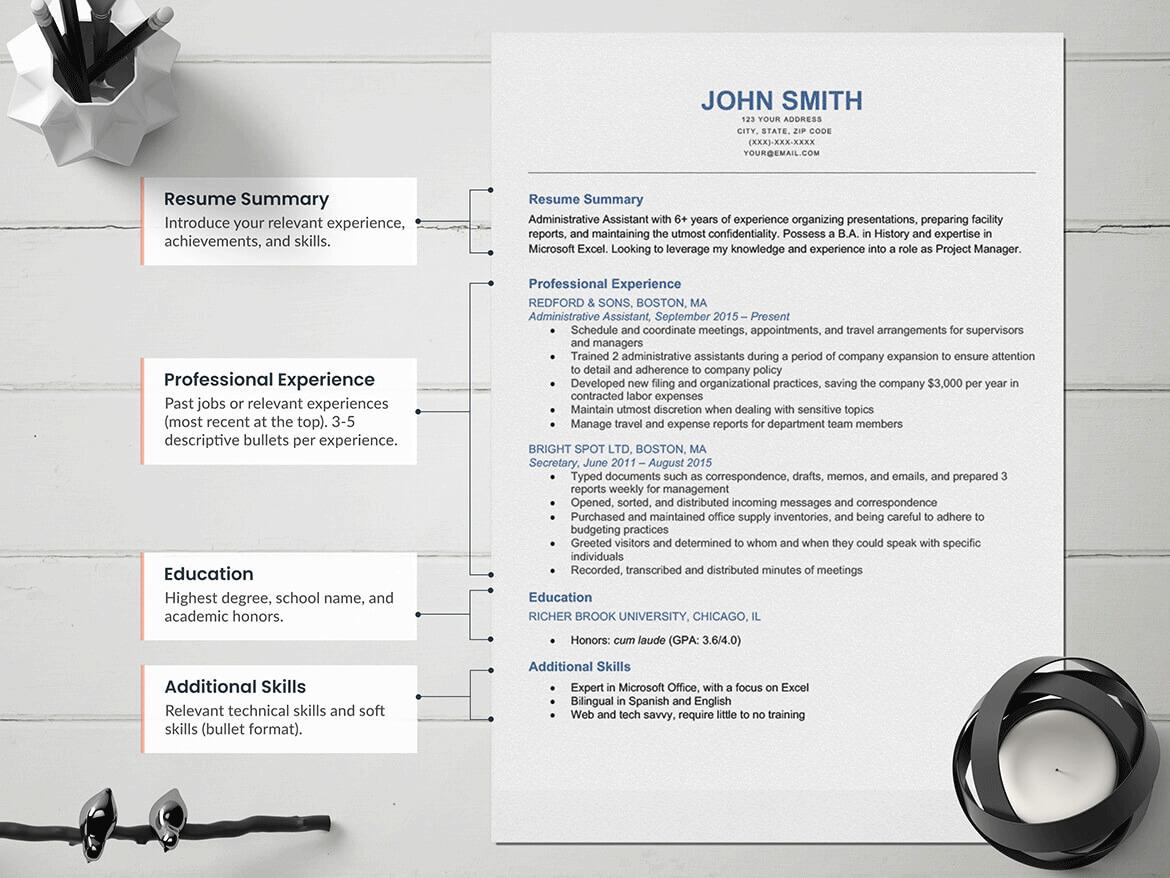
2. Functional Resume
Also called a skills-based resume, a functional resume is a type of resume designed to focus on your relevant professional skills rather than your chronological work history.
The defining feature of a functional resume is its expanded “Relevant Skills” section, which takes up the majority of your resume and replaces a detailed work experience section.
Additionally, the “Relevant Skills” section of a functional resume groups your experience under skill categories instead of job titles. Under each category, bullet points are used to highlight examples of your accomplishments or other ways you’ve put your skills to work.
Who Should Use It
A functional resume will likely suit you if you’re:
- Changing industries
- Someone with sizeable gaps in your work history
Functional resume example
Here’s what a functional resume should look like:
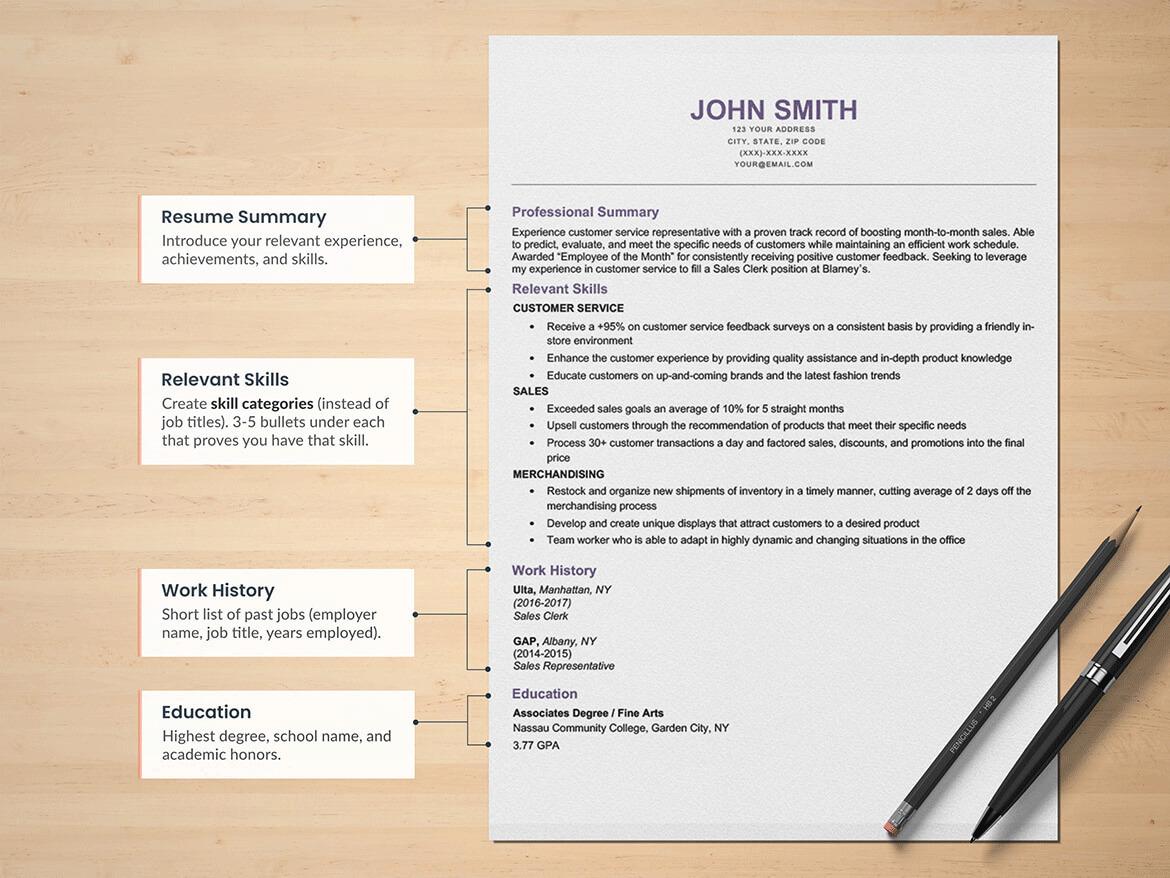
3. Combination Resume
A combination resume mixes the most useful elements of the chronological and functional resume formats.
It focuses on your skills, as a functional resume does, but also provides ample space for you to detail your work history — usually in chronological order.
Who Should Use It
Compared with the other types of resume formats, a combination resume is a good choice if you have any of the following to showcase:
- Technical skills you’ve developed over a long, specialized career
- Transferable skills, with full details of your work history
Combination resume example
Here’s what a combination resume looks like:
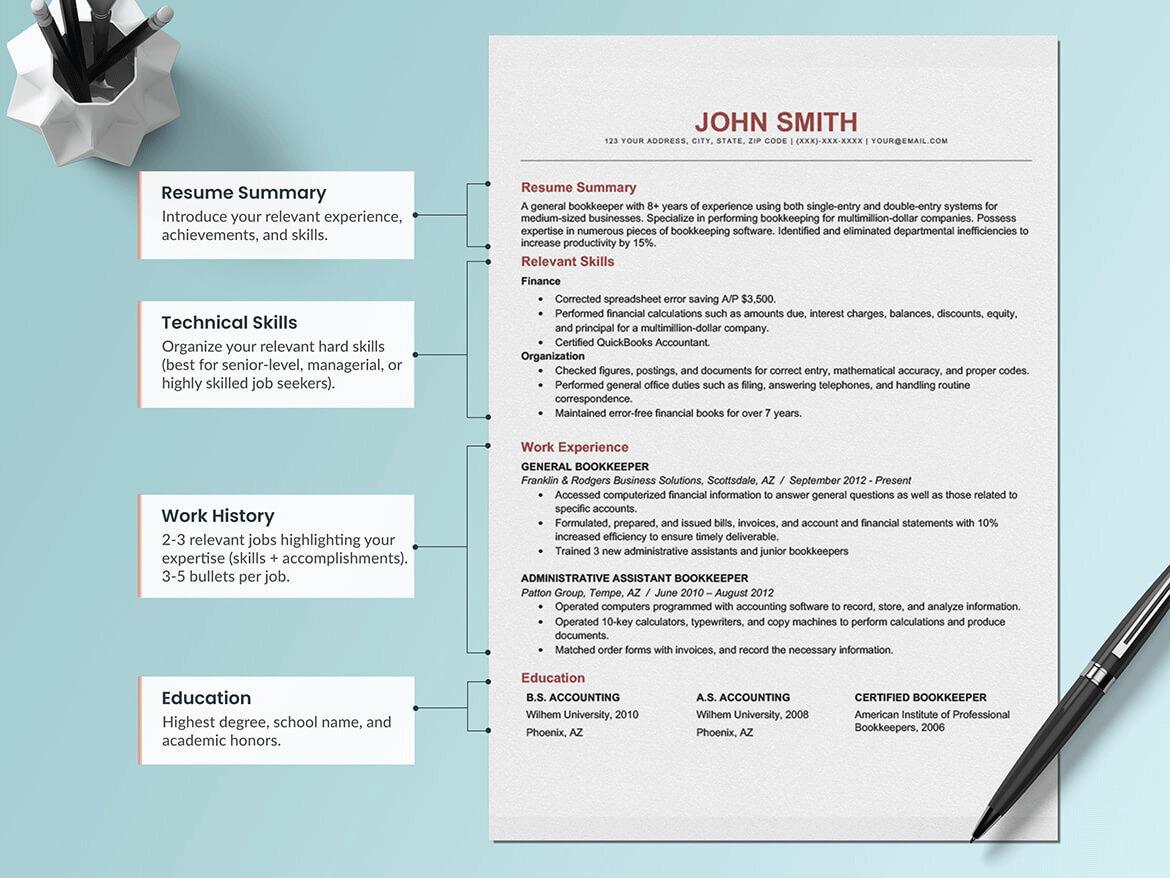
Alternative resume types
There are a variety of different types of resumes that are less commonly used or are designed for a specific purpose.
Here are some other less commonly used resume types:
Targeted Resume
A targeted resume is a resume that’s tailored to address the specific needs of each company you apply to. You can format it as either a functional, combination, or chronological resume — the key difference is that you specifically target each detail to the role you’re applying for
To write an effective targeted resume, read through the job posting and look for any notable skills, job duties, keywords, or requirements that apply to you. Then, adjust your resume to highlight your most relevant skills and experience.
Writing a targeted resume takes longer than other types of resumes, because you need to research each company and write your resume to meet each job description’s requirements. However, it’s also the most effective resume you can write because it makes you look perfect for a specific job.
Who Should Use It
If your experience and skills match the job description, then you should write a targeted resume. Because targeted resumes are more likely to get callbacks, anyone should write one if they have the relevant background.
General resumes are still valuable, however. They’re useful to bring to a job fair, because you might not know beforehand which companies will attend, and what job roles they have open.
Infographic Resume
Unlike a standard resume, an infographic resume incorporates graphics and other visual elements to present your professional details in a unique, attention-grabbing style.
Here’s an example of what an infographic resume type looks like:
Who Should Use It
If you’re an aspiring graphic designer, using an infographic resume can be a good way to showcase your graphic design skills and demonstrate them at the same time. If you’re looking for a creative resume without all the infographics, a visual resume can also be a good option.
However, be careful:
Around 75% of companies use — or plan to use — resume-reading software called applicant tracking systems (ATS). ATS software scans your resume and decides if it contains enough resume keywords to make it worth showing to a hiring manager.
Many design elements used on infographic resumes are unreadable to ATS software, and will result in your application being discarded. Additionally, many companies consider creative types of resumes like this to be unprofessional.
Only use an infographic resume if you’re writing a graphic design resume or you’re certain the company doesn’t use an ATS. Otherwise, a standard resume is better because it more clearly demonstrates your skills and professional background.
Federal Resume
A federal resume template is used to apply to positions within the US federal government.
Federal resumes differ from traditional resumes in a number of ways:
Firstly, they’re much longer, typically running somewhere between two and six pages, and include a highly detailed experience section.
Additionally, federal resumes contain a variety of information specific to jobs in the public sector, such as your GS grade, security clearance, and citizenship information.
Here’s a federal resume example, written by a low-level federal employee:
Federal Resume
Who Should Use It
You should use a federal resume and a federal cover letter if you’re applying to any job with the US federal government.
Nontraditional Resume
There are many other types of resumes that can be categorized as nontraditional.
We’ve already mentioned infographic resumes, but there are other types too. Most are modern takes on the traditional resume, including:
- video resumes
- online portfolios
- personal websites
What all these resume types have in common is that they forego a traditional structure in favor of a creative, memorable approach for presenting qualifications, skills, and professional experience.
Who Should Use It
You should use a non-traditional resume if you’re applying for a job that requires the same skills used in making the resume. For example, a video resume can help you showcase your video editing skills.
But because resume-reading software is still limited in what it can understand, you should still use a traditional resume as your main application document, unless the job posting specifically asks for something else.
Attach your non-traditional resume type as something extra for the hiring manager to check out. Doing so can give you the edge over other equally qualified candidates who submit only a resume.
Mini Resume
This type of resume can be anything from a business card–sized handout featuring a brief version of your resume introduction, to a notepad paper–sized resume.
The idea is you keep a mini resume on hand, in case you happen to meet a recruiter or CEO.
Here’s an example of a printable mini resume that can fit on a business card:
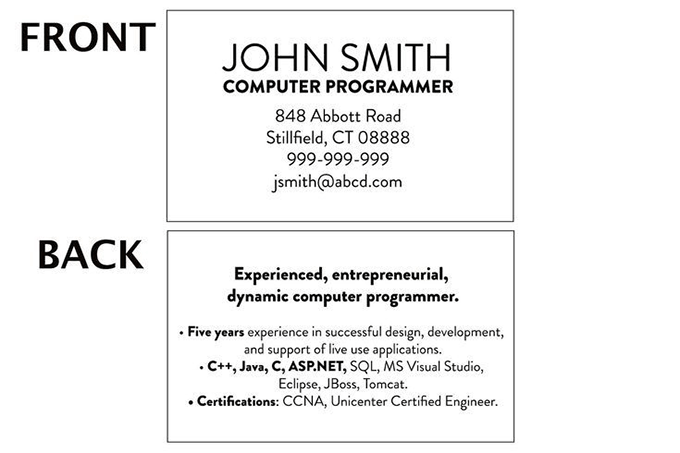
Who Should Use It
If you’re looking for a new job and are attending networking events or industry conferences, take a mini resume with you. Unlike a job fair, you wouldn’t necessarily be looking for jobs at these types of events, so it doesn’t make sense to bring full-size printouts of your resume.
A mini resume gives you something to hand out in case a good opportunity presents itself. It provides more information to potential employers than just a business card with your contact details would.
Whatever type of resume you choose to use, make sure it follows all the current resume trends.
Click to rate this article
4.5 Average rating

